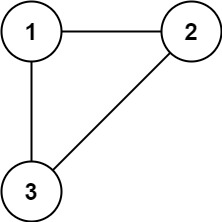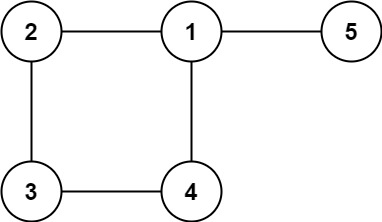684 - Redundant Connection
#medium
In this problem, a tree is an undirected graph that is connected and has no cycles.
You are given a graph that started as a tree with n nodes labeled from 1 to n, with one additional edge added. The added edge has two different vertices chosen from 1 to n, and was not an edge that already existed. The graph is represented as an array edges of length n where edges[i] = [ai, bi] indicates that there is an edge between nodes ai and bi in the graph.
Return an edge that can be removed so that the resulting graph is a tree of n nodes. If there are multiple answers, return the answer that occurs last in the input.
Example 1:
Input: edges = [ [1,2],[1,3],[2,3] ]
Output: [2,3]
Example 2:
Input: edges = [ [1,2],[2,3],[3,4],[1,4],[1,5] ]
Output: [1,4]
Constraints:
n == edges.length3 <= n <= 1000edges[i].length == 21 <= ai < bi <= edges.lengthai != bi- There are no repeated edges.
- The given graph is connected.
class Solution {
public:
unordered_map<int, int> father; // key,father_key
vector<int> findRedundantConnection(vector<vector<int>>& edges) {
// 把環上的最後一個邊移除 UnionFind(判斷是不是一個group)
for ( int i = 0; i < edges.size(); i++ ) {
int a = edges[i][0];
int b = edges[i][1];
if ( father.find(a) == father.end() ) father[a] = a;
if ( father.find(b) == father.end() ) father[b] = b;
// a,b是不是group,老祖宗同一個嗎
if ( FindFather(a) == FindFather(b) ) return edges[i];
else Union( a, b );
}
return {};
}
// 順便更新此節點的father為老祖宗。
int FindFather( int x ) {
int y = x;
while( father[y] != y ) {
y = father[y];
father[x] = father[y];
}
return father[x];
}
// 聯姻
void Union( int x, int y ) {
x = father[x];
y = father[y];
if ( x < y ) father[y] = x;
else father[x] = y;
}
};

